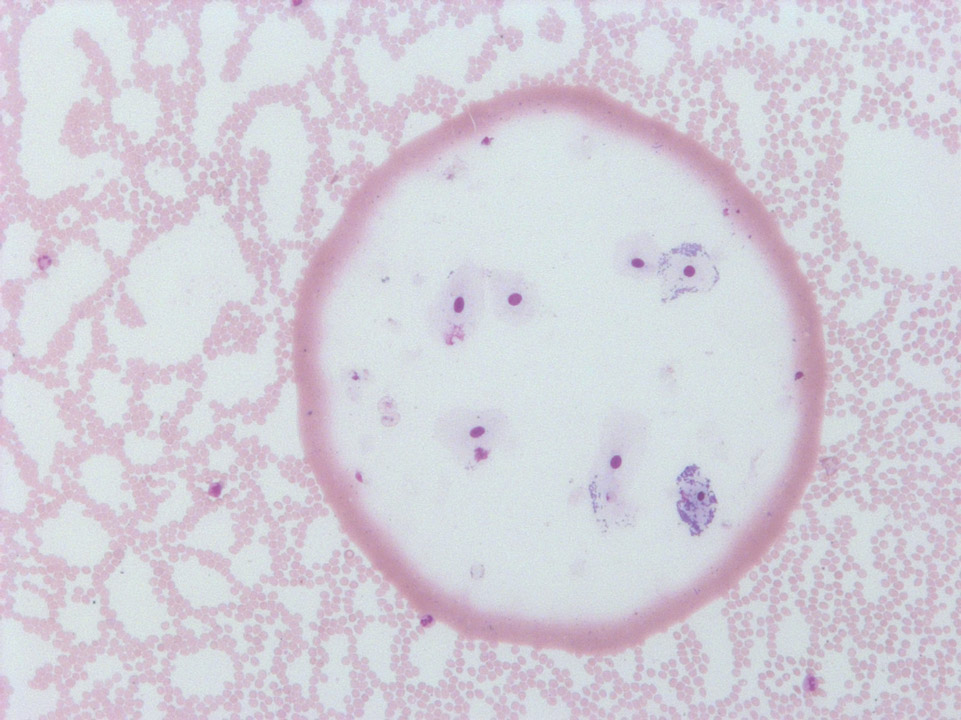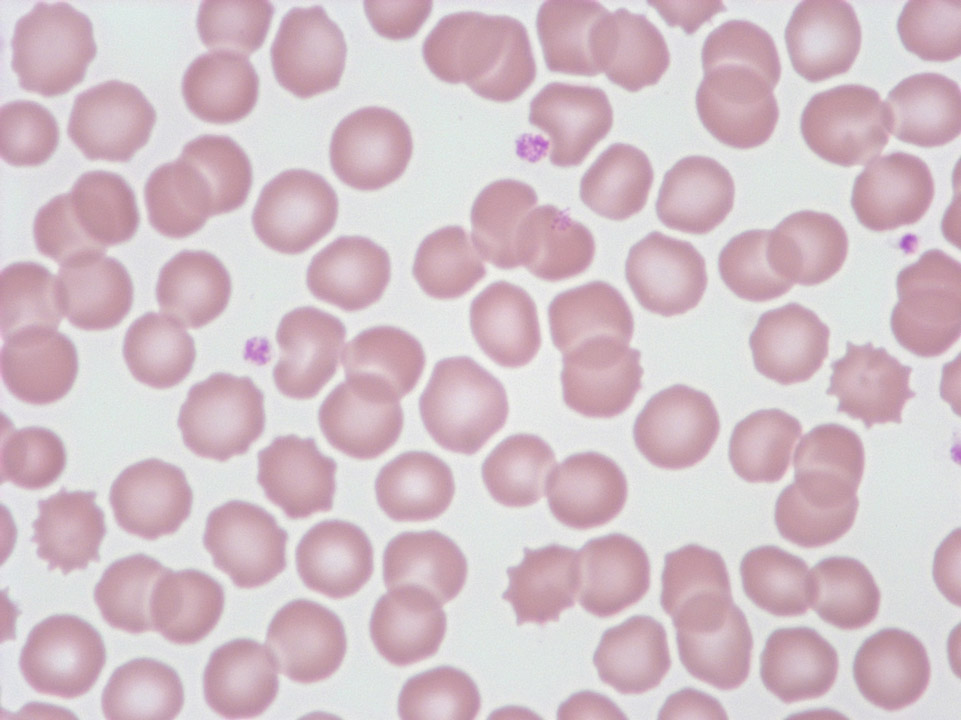Scientific Image Gallery
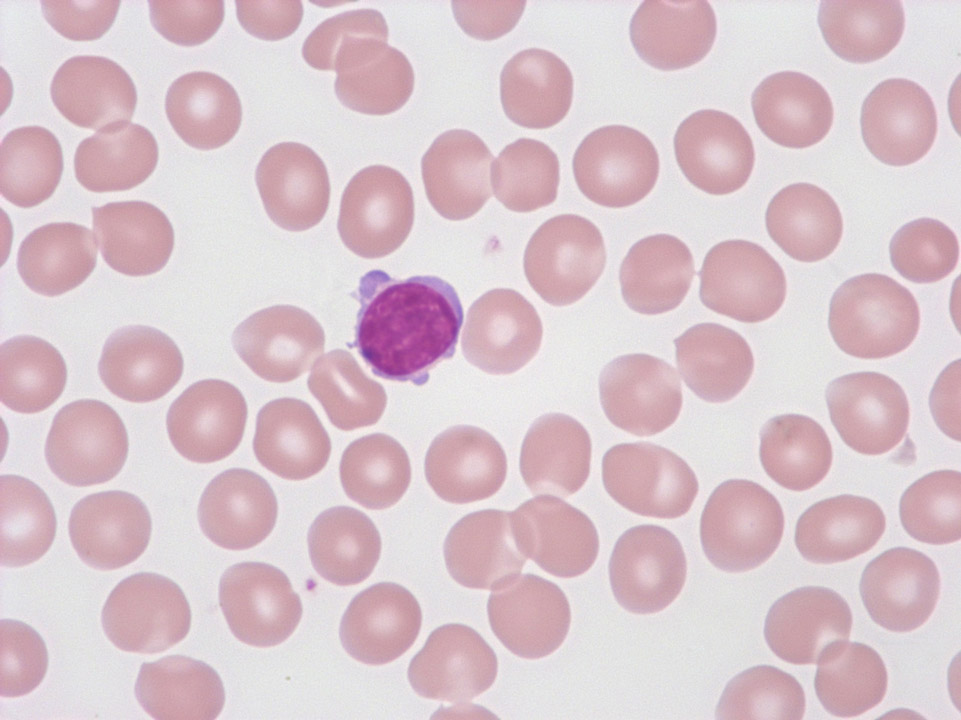
Cytoplasmic protrusions of a lymphocyte in normal blood. (Although such protrusions are frequently found with infections, contrary to activated lymphocytes they are of no diagnostic importance.)
<p>Cytoplasmic protrusions of a lymphocyte in normal blood. (Although such protrusions are frequently found with infections, contrary to activated lymphocytes they are of no diagnostic importance.)</p>
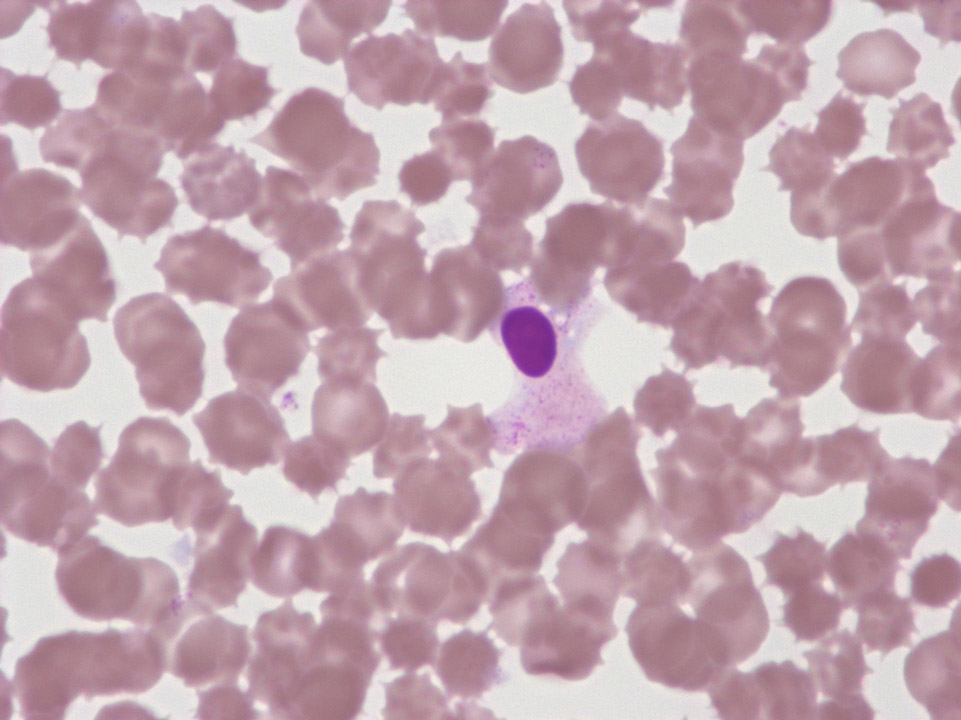
Granulocytes showing storage-related degradation (for example, vacuolisation) can be seen in EDTA blood samples from healthy individuals after 1–2 days (here after 48 hours). In samples from severely ill patients this can occur already after several hours.
<p>Granulocytes showing storage-related degradation (for example, vacuolisation) can be seen in EDTA blood samples from healthy individuals after 1–2 days (here after 48 hours). In samples from severely ill patients this can occur already after several hours.</p>
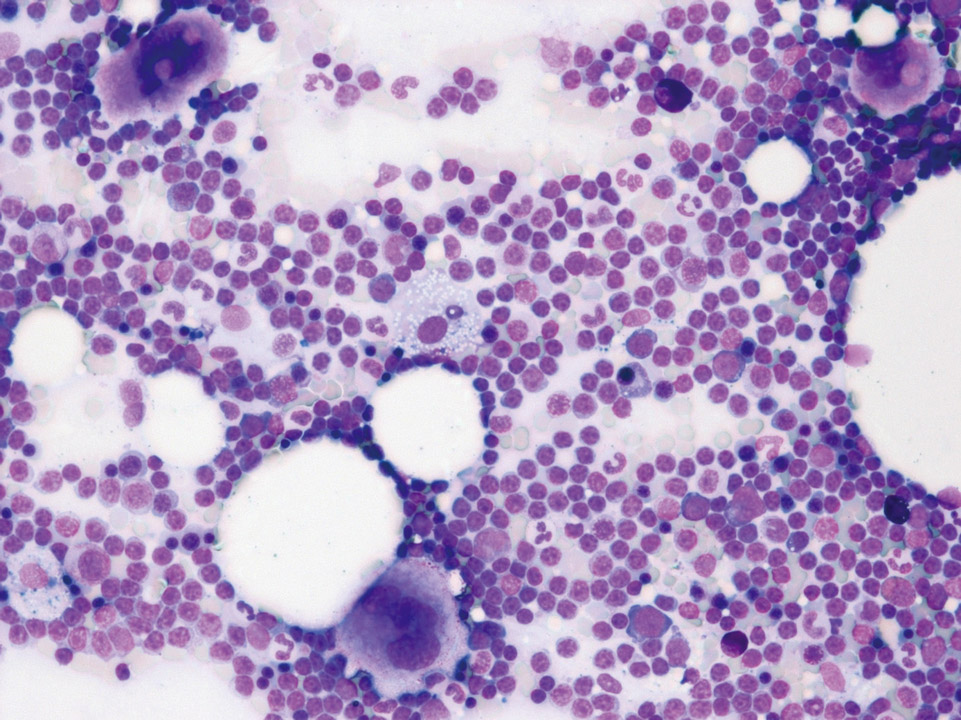
Bone marrow cytology (May-Grünwald-Giemsa stain) of a patient with B-CLL: Dense infiltration of the bone marrow by the B-CLL. Megakaryocyte count and morphology are normal.
<p>Bone marrow cytology (May-Grünwald-Giemsa stain) of a patient with B-CLL: Dense infiltration of the bone marrow by the B-CLL. Megakaryocyte count and morphology are normal.</p>
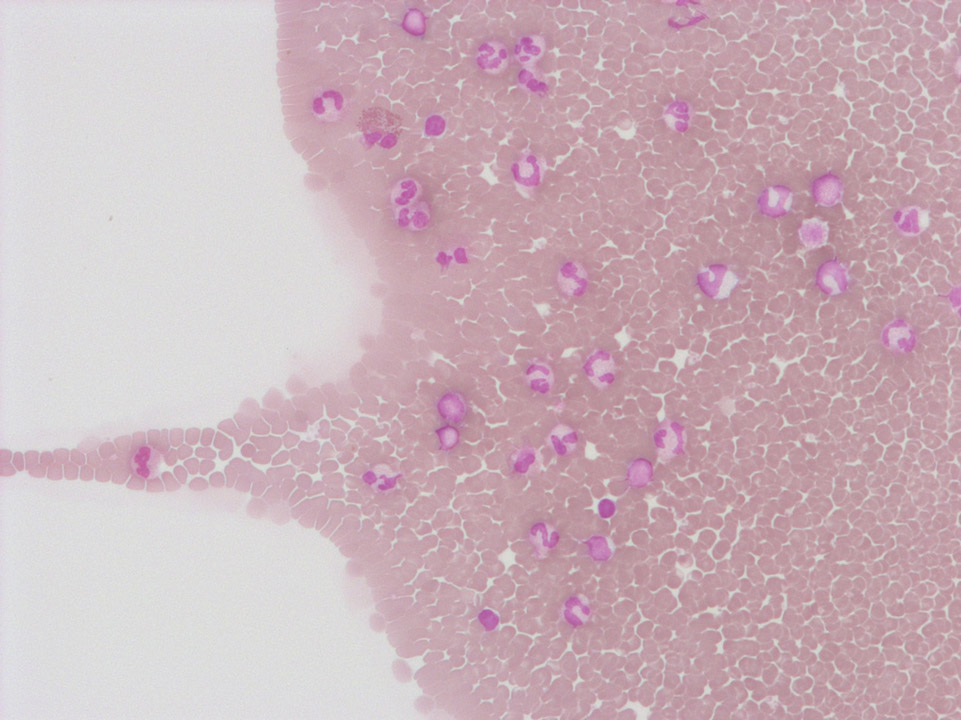
During the preparation of a large number of blood films for EQA purposes, the blood drop on the slide had already started to dry prior to smearing, so that, when the blood film was made, many white blood cells were pulled towards the edge, resulting in disturbed cell distribution.
<p>During the preparation of a large number of blood films for EQA purposes, the blood drop on the slide had already started to dry prior to smearing, so that, when the blood film was made, many white blood cells were pulled towards the edge, resulting in disturbed cell distribution.</p>
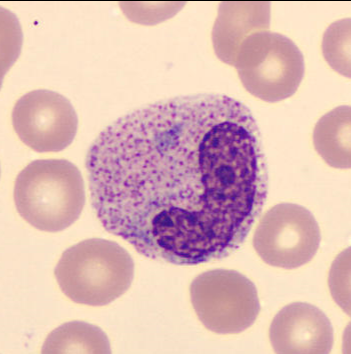
Doehle bodies were named after the German pathologist Karl Gottfried Paul Döhle (1855-1928). They are defined as light blue-grey oval inclusions with a diameter of 1 to 3 µm located in the peripheral cytoplasm of mature and immature neutrophils. The structures are seemingly derived from the rough endoplasmic reticulum and hence contain RNA. They are often present in conjunction with toxic granulation.
<p>Doehle bodies were named after the German pathologist Karl Gottfried Paul Döhle (1855-1928). They are defined as light blue-grey oval inclusions with a diameter of 1 to 3 µm located in the peripheral cytoplasm of mature and immature neutrophils. The structures are seemingly derived from the rough endoplasmic reticulum and hence contain RNA. They are often present in conjunction with toxic granulation.</p>
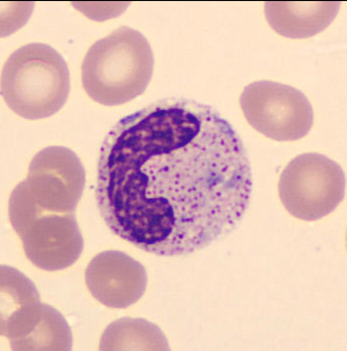
Doehle bodies were named after the German pathologist Karl Gottfried Paul Döhle (1855-1928). They are defined as light blue-grey oval inclusions with a diameter of 1 to 3 µm located in the peripheral cytoplasm of mature and immature neutrophils. The structures are seemingly derived from the rough endoplasmic reticulum and hence contain RNA. They are often present in conjunction with toxic granulation.
<p>Doehle bodies were named after the German pathologist Karl Gottfried Paul Döhle (1855-1928). They are defined as light blue-grey oval inclusions with a diameter of 1 to 3 µm located in the peripheral cytoplasm of mature and immature neutrophils. The structures are seemingly derived from the rough endoplasmic reticulum and hence contain RNA. They are often present in conjunction with toxic granulation. </p> <p> </p>

